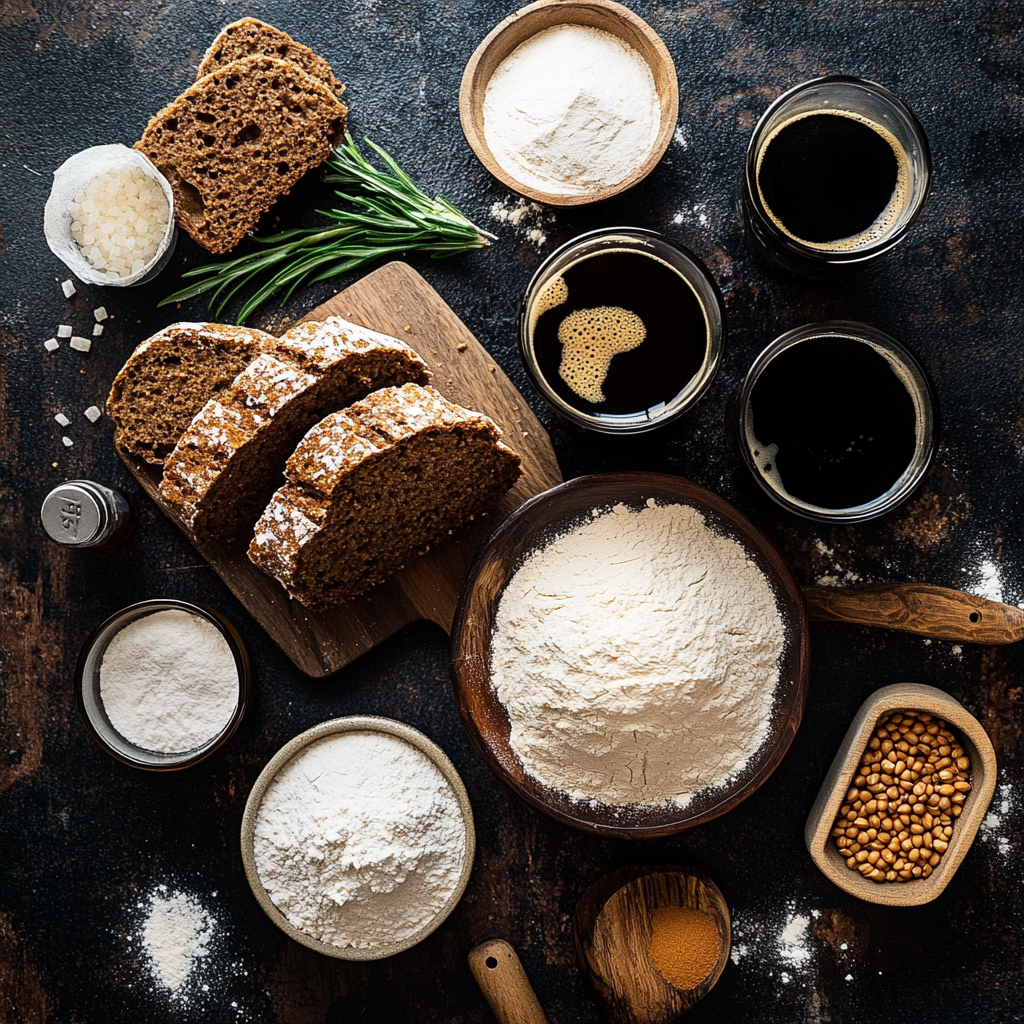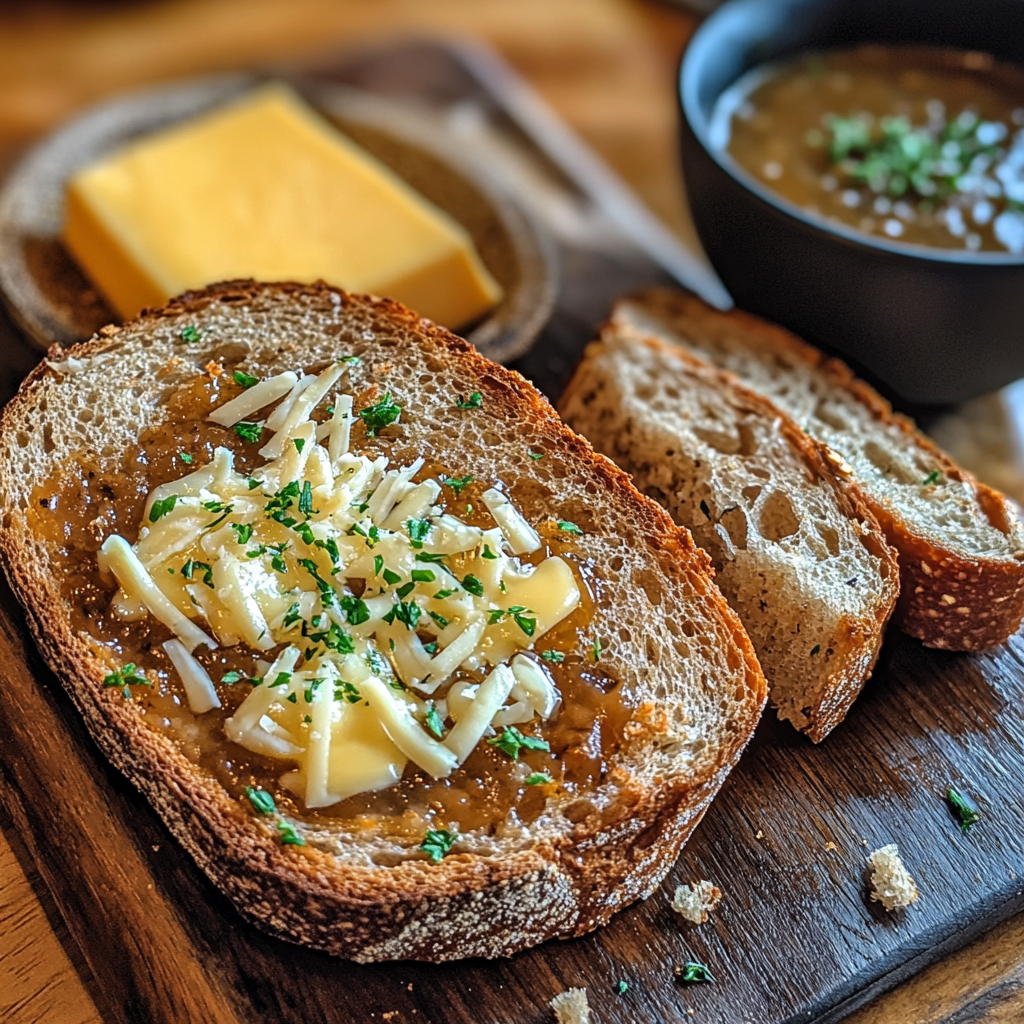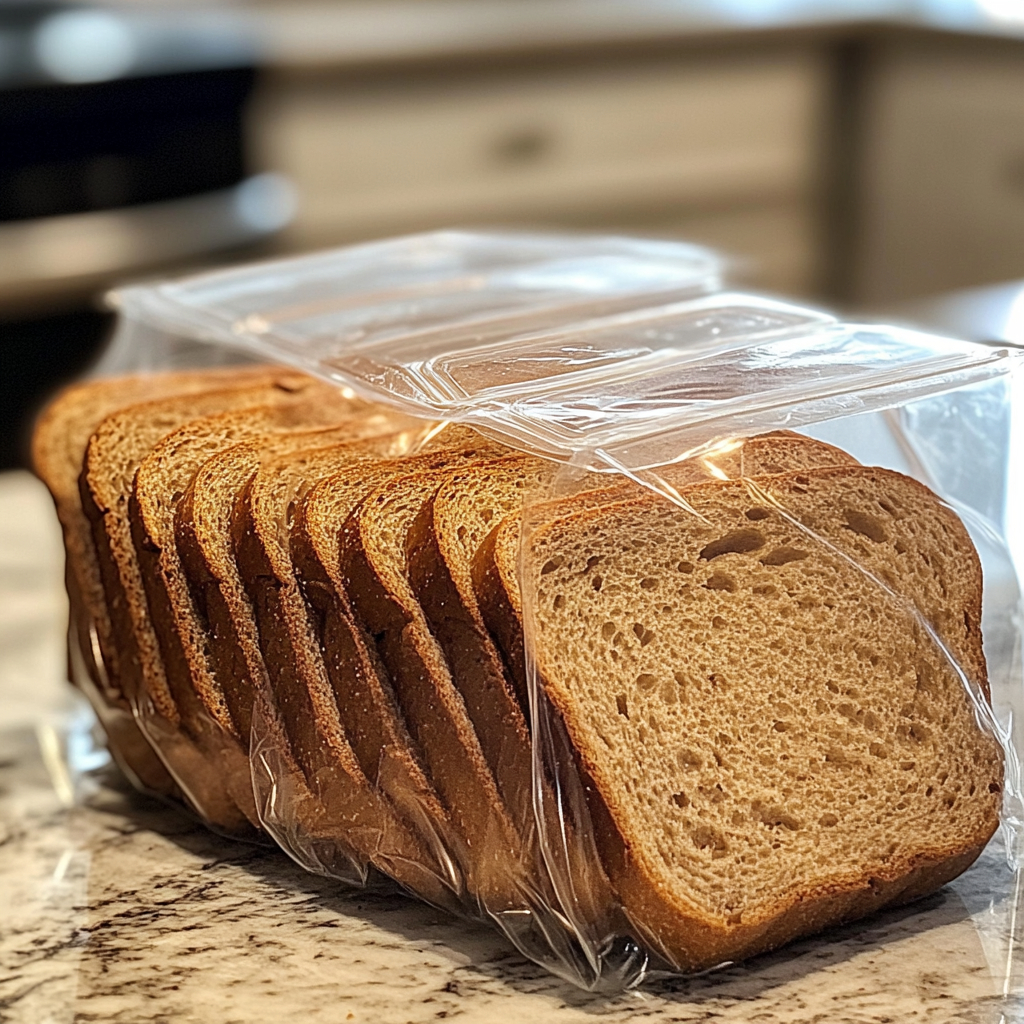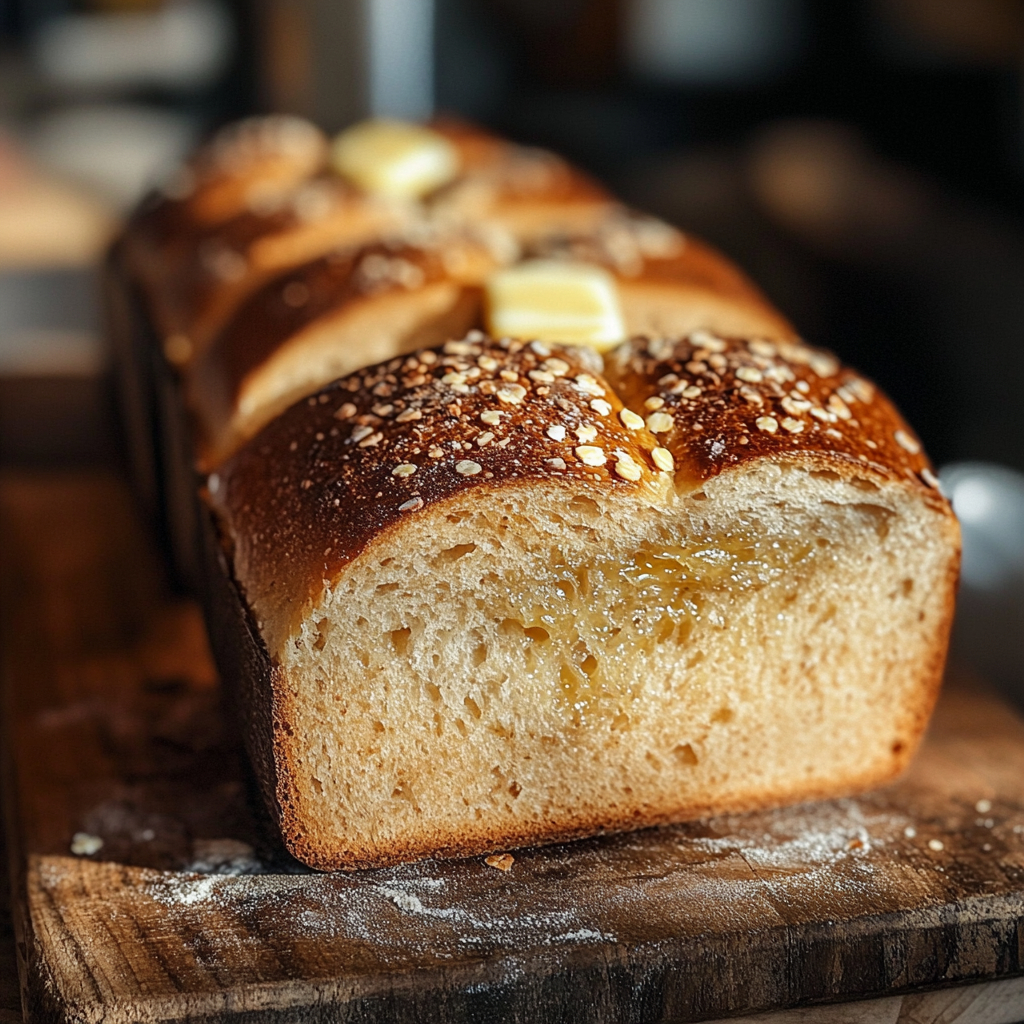Hello and welcome! I’m Chef Marina, and I’m so excited to have you in my kitchen at Easy Rustle Recipes—where flavorful, fuss-free meals come to life. If you’re looking for a comforting bake with bold flavor and simple steps, this recipe Guinness bread will be your new favorite.
At Easy Rustle Recipes, my mission is to help you create meals that are both satisfying and approachable. And when it comes to bread, nothing captures rustic charm quite like Guinness bread. This rich, hearty loaf uses the depth of stout beer to transform a simple recipe into something unforgettable. The best part? It’s a recipe Guinness bread fans will love because it doesn’t require any yeast or complicated kneading. Just mix, pour, bake—and enjoy.
Whether you’re a home cook exploring new flavors or someone who just wants a reliable, wholesome bread to serve with soups or Irish classics, this recipe Guinness bread checks every box. It’s moist, earthy, slightly sweet, and packed with character—perfect for your next brunch board or holiday table.
PrintThe Ultimate Recipe Guinness Bread Guide: How to Make Irish Beer Bread Like a Pro
- Total Time: 1 hour
- Yield: 1 loaf (8–10 slices) 1x
- Diet: Vegetarian
Description
This recipe Guinness bread is a hearty, no-yeast Irish loaf made with the bold flavor of Guinness stout. Moist, dense, and slightly sweet, it’s perfect alongside soups, cheeses, or a slather of Irish butter. With just a few pantry staples and zero kneading, this quick bread delivers rustic flavor with minimal effort.
Ingredients
- 2 cups whole wheat flour
- 1 cup all-purpose flour
- 1 ½ teaspoons baking soda
- 1 teaspoon salt
- ⅓ cup brown sugar
- 2 tablespoons molasses (optional)
- 4 tablespoons melted butter
- 1 bottle (11.2 oz or 330 ml) Guinness Draught
- ½ cup buttermilk or plain yogurt
Instructions
- Preheat oven to 350°F (175°C). Grease a 9×5-inch loaf pan or line with parchment.
- In a large bowl, whisk together whole wheat flour, all-purpose flour, baking soda, salt, and brown sugar.
- Add melted butter, buttermilk, molasses (if using), and Guinness. Stir gently until just combined.
- Pour batter into the prepared loaf pan and smooth the top.
- Bake for 45–55 minutes, or until a toothpick inserted in the center comes out clean.
- Cool in pan for 10 minutes, then transfer to a wire rack to cool completely before slicing.
Notes
Don’t overmix the batter—stir just until combined for a tender crumb. For a richer loaf, use more molasses and reduce sugar. Store in an airtight container for up to 3 days or freeze for up to 2 months.
- Prep Time: 10 minutes
- Cook Time: 50 minutes
- Category: Bread
- Method: Baking
- Cuisine: Irish
Nutrition
- Serving Size: 1 slice
- Calories: 200
- Sugar: 9g
- Sodium: 350mg
- Fat: 6g
- Saturated Fat: 3.5g
- Unsaturated Fat: 2g
- Trans Fat: 0g
- Carbohydrates: 34g
- Fiber: 2g
- Protein: 4g
- Cholesterol: 15mg
Keywords: recipe Guinness bread, Guinness quick bread, Irish bread, stout bread, no yeast bread
Table Of Contents
Table of Contents
Ingredients Breakdown

Key Ingredients in a Traditional Recipe Guinness Bread
A well-balanced recipe Guinness bread begins with just a few simple pantry staples. Each ingredient plays a key role in achieving that signature dark, malty flavor and dense, moist texture. Let’s break it down:
1. Flour
For most Guinness bread recipes, all-purpose flour or whole wheat flour is commonly used. Whole wheat flour offers a nutty flavor and dense crumb that complements the boldness of the Guinness stout.
Pro Tip: For a lighter texture, consider using half all-purpose flour and half whole wheat flour.
2. Baking Soda
Since this is a quick bread, baking soda is used as the leavening agent. It reacts with the acidity of the Guinness and any added buttermilk or yogurt to help the loaf rise without the need for yeast.
3. Salt
Just a pinch helps bring all the other flavors together and balances the slight bitterness from the stout.
4. Brown Sugar or Molasses
This is what gives recipe Guinness bread its subtle sweetness. Brown sugar adds a mellow, caramel-like note, while molasses deepens the flavor and darkens the crust.
5. Butter
Melted butter adds richness and moisture. It also creates a more tender crumb. Some bakers prefer to use oil for a softer loaf, but butter gives it that comforting, homemade flavor.
6. Guinness Stout
This is the star of the show. Guinness lends its bold, roasted taste and foamy texture to the dough. When baked, the alcohol burns off, leaving behind malty, toasty notes that define the bread’s unique flavor.
Choose original Guinness Draught for the best results. Avoid flavored or extra stout variants unless you want a more intense finish.
Best Type of Flour and Guinness to Use
Best Flours for Texture & Flavor
| Type of Flour | Texture | Flavor Notes |
|---|---|---|
| Whole Wheat Flour | Dense, hearty | Nutty, earthy |
| All-Purpose Flour | Soft, mild crumb | Neutral, balanced |
| Oat Flour (optional) | Slightly crumbly | Sweet, rustic (for variation) |
For the best recipe Guinness bread, try a 1:1 blend of whole wheat and all-purpose flour. This gives you richness without making the bread too heavy.
Choosing the Right Guinness
| Type of Guinness | Use in Bread? | Notes |
|---|---|---|
| Guinness Draught | ✔ Yes | Smooth, balanced—ideal for baking |
| Guinness Extra Stout | ✔ With care | Stronger bitterness, intense aroma |
| Guinness Nitro Cold Brew | ✘ No | Too sweet and artificially flavored |
For more recipes :
–Pinterest
–FaceBook
Step-by-Step Recipe for Guinness Bread
Baking the perfect recipe Guinness bread at home is incredibly simple, even if you’re not an experienced baker. With no yeast and no rise time required, it’s a fast and foolproof way to bring a slice of Ireland to your table. Let’s walk through the full process.
Simple Classic Recipe with No Yeast
Here’s an easy and authentic recipe Guinness bread that you can whip up in under 10 minutes of prep time. This loaf is rich, moist, and subtly sweet with that signature Guinness depth.
Ingredients:
| Ingredient | Quantity |
|---|---|
| Whole wheat flour | 2 cups |
| All-purpose flour | 1 cup |
| Baking soda | 1 ½ teaspoons |
| Salt | 1 teaspoon |
| Brown sugar | ⅓ cup |
| Molasses (optional) | 2 tablespoons |
| Butter (melted) | 4 tablespoons (½ stick) |
| Guinness Draught | 1 bottle (11.2 oz or 330 ml) |
| Buttermilk or plain yogurt | ½ cup |
Instructions:
- Preheat Oven: Set your oven to 350°F (175°C). Grease a standard 9×5-inch loaf pan or line it with parchment paper.
- Combine Dry Ingredients: In a large bowl, whisk together both flours, baking soda, salt, and brown sugar.
- Add Wet Ingredients: Pour in the melted butter, buttermilk (or yogurt), and Guinness. If using molasses, add that too. Stir gently until just combined. Don’t overmix—the batter should be thick but pourable.
- Transfer to Pan: Spoon the batter into the prepared loaf pan. Smooth the top with a spatula.
- Bake: Bake for 45 to 55 minutes, or until a toothpick inserted in the center comes out clean.
- Cool: Let the bread rest in the pan for 10 minutes, then transfer to a wire rack to cool completely before slicing.
Baking Instructions and Timing Tips
- Don’t Overmix: Like with muffins or quick breads, overmixing the dough will create a tough texture. Stir until just blended.
- Check Early: Ovens vary, so begin checking the loaf at around the 45-minute mark.
- Let It Rest: It’s tempting to slice into warm bread right away, but Guinness bread benefits from cooling. This sets the crumb and deepens the flavor.
Nutrition and Calorie Insights
While Guinness bread is beloved for its deep, rich flavor, many people wonder if this hearty loaf is a calorie bomb or a sensible indulgence. In this section, we’ll break down what’s really inside a slice of recipe Guinness bread and how it fits into your everyday eating.
Is Guinness Bread High in Calories?
The short answer is: moderate, depending on your serving size and ingredients used.
A typical slice of homemade recipe Guinness bread (about 1-inch thick) contains around 180–220 calories. This estimate assumes a loaf made with whole wheat flour, Guinness Draught, brown sugar, and butter.
Factors that can increase or reduce the calorie count:
- Molasses or additional sugar will raise calories.
- Using low-fat buttermilk or yogurt lowers fat content.
- Replacing some flour with oats or almond flour may increase fiber or fat depending on the blend.
- Skipping butter and using applesauce can cut fat content, but it will change the flavor and moisture balance.
Here’s a basic nutritional profile for one slice (based on an 8-slice loaf):
| Nutrient | Approx. Amount per Slice |
|---|---|
| Calories | 200 |
| Total Fat | 6g |
| Saturated Fat | 3.5g |
| Carbohydrates | 34g |
| Fiber | 2g |
| Sugar | 9g |
| Protein | 4g |
If you’re mindful of your calorie intake, recipe Guinness bread is best enjoyed as part of a balanced meal—paired with lean proteins or fresh vegetables.
Nutritional Breakdown per Slice
| Component | Health Insight |
|---|---|
| Whole Wheat Flour | Adds fiber, B vitamins, and a nutty flavor |
| Guinness Stout | Contains iron and antioxidants from roasted barley |
| Brown Sugar | Offers molasses-like minerals, but still sugar |
| Butter | Provides richness and fat-soluble vitamins |
Recipe Guinness bread may not be a “diet food,” but it’s far from junk. With wholesome ingredients and no artificial additives, it’s a feel-good option—especially when made from scratch.
What Does Guinness Bread Taste Like?

If you’ve never tried it before, the flavor of recipe Guinness bread might surprise you—in the best way possible. It’s not overly “beery,” and definitely not bitter. Instead, you get a rich, slightly sweet, deeply satisfying loaf that balances earthiness with a touch of warmth.
Flavor Profile: Sweet, Bitter, Nutty
Recipe Guinness bread offers a truly complex flavor experience that makes it stand out from typical quick breads. Here’s what to expect with every bite:
- Roasty Depth: Thanks to the Guinness stout, the bread has a toasty, roasted undertone—kind of like coffee or dark chocolate, but much subtler.
- Mild Sweetness: Brown sugar and molasses add a warm, caramelized sweetness that pairs beautifully with the bitterness of the stout.
- Nutty Whole Grain Taste: If you use whole wheat flour, you’ll get a hearty, grain-forward flavor that complements the dark beer base.
- Slight Tang: When buttermilk or yogurt is used, a gentle tang shines through, balancing the bread and lifting the richness.
The end result? A balanced loaf that feels both rustic and refined.
Bonus: When toasted, the crust caramelizes slightly, amplifying the sweetness and crunch. That texture contrast makes each slice a delight—especially with toppings.
Best Pairings: Cheeses, Soups, Butter
A good recipe Guinness bread is versatile, pairing well with both sweet and savory additions. Here are a few of our favorite ways to serve it:
| Pairing Idea | Why It Works |
|---|---|
| Salted Irish Butter | Enhances richness and complements the sweetness |
| Sharp Cheddar or Blue Cheese | Contrasts the maltiness with bold, salty tang |
| Beef Stew or Irish Lamb Stew | Soaks up broth beautifully, adding texture to the dish |
| Honey or Fruit Preserves | Brings out the molasses and brown sugar tones |
| Smoked Salmon or Cream Cheese | Adds a gourmet twist for brunch or appetizers |
Feeling indulgent? Try toasting a slice and topping it with melted brie and fig jam.
For more recipes :
–Pinterest
–FaceBook
Expert Tips for Baking Perfect Guinness Bread
While recipe Guinness bread is wonderfully forgiving, a few smart tweaks can take your loaf from good to unforgettable. Whether it’s your first time baking with stout or you’re perfecting a go-to version, these pro-level tips will help you nail the perfect texture and flavor every time.
How to Avoid a Dense or Dry Loaf
A common issue with Guinness bread recipes is ending up with a loaf that’s too heavy or overly dry. Luckily, these practical fixes make all the difference:
- Don’t Overmix
Once wet ingredients hit the bowl, stir only until the dry spots disappear. Overmixing can cause gluten development, leading to a tough or chewy texture. - Measure Accurately
Using too much flour is the #1 reason for dry bread. Spoon flour into your measuring cup and level it with a knife—or better yet, use a digital scale. - Check Oven Temperature
Bake at a steady 350°F (175°C). Ovens vary, so use an oven thermometer to make sure your loaf isn’t baking too fast on the outside. - Use Fresh Baking Soda
Flat baking soda = no rise. For the perfect recipe Guinness bread, check that your baking soda hasn’t expired—it should fizz when added to vinegar. - Let It Cool Completely
Patience pays off. Cooling allows steam to settle and crumb to firm. Slicing too early causes a gummy or overly moist middle.
Substitution Ideas for Ingredients
You can easily personalize your recipe Guinness bread to suit different dietary needs or taste preferences. These substitutions keep things flexible without losing that iconic taste.
| Ingredient | Substitute | Notes |
|---|---|---|
| Whole Wheat Flour | Oat flour or spelt flour | Adds earthy texture with slight flavor change |
| Buttermilk | Plain yogurt or milk + lemon juice | Use 1 tbsp lemon juice per 1 cup of milk |
| Brown Sugar | Coconut sugar or maple syrup | Adds natural sweetness with a twist |
| Butter | Olive oil or unsweetened applesauce | Lower in saturated fat, still moist |
| Guinness Draught | Alcohol-free stout or dark malt | Maintains taste for non-alcoholic preference |
Going gluten-free? Try a 1:1 gluten-free flour blend, but expect a slightly crumblier texture—especially with whole-grain alternatives.
Variations of Guinness Bread Recipes
One of the best things about a great recipe Guinness bread is its flexibility. Once you’ve nailed the classic version, you can branch out and explore new flavors, textures, and dietary tweaks that suit your kitchen style. In this part, we’ll walk through some of the most-loved and creative variations of this hearty Irish staple—whether you’re going wholesome, gluten-free, or just looking for something fresh and fun.
Guinness Molasses Bread Variation
If you’re a fan of rich, slightly sweet flavors, this twist on the traditional recipe Guinness bread is a must-try. By increasing the molasses and dialing back the sugar, you create a deeper, more aromatic loaf.
How to Modify the Classic Recipe:
- Use ½ cup of molasses instead of 2 tablespoons.
- Reduce brown sugar to 2 tablespoons or skip it entirely.
- Add a pinch of cloves, nutmeg, or cinnamon for warmth.
- Extend the baking time by 5–10 minutes to account for the added moisture.
Flavor Profile:
This version has intense caramel notes, a sticky-sweet crust, and a moist crumb that tastes almost like dessert. It pairs beautifully with sharp cheeses, salted butter, or even smoked meats.
This variation of the recipe Guinness bread makes a wonderful gift during the holidays and adds depth to any cozy dinner table.
Whole Wheat and Gluten-Free Options
Whether you’re avoiding gluten or just eating cleaner, Guinness bread recipes are surprisingly easy to adapt without losing flavor.
Whole Wheat Upgrade:
- Swap all-purpose flour for more whole wheat or spelt flour.
- Boost moisture with an extra spoonful of yogurt or milk.
- Expect a slightly denser loaf with a hearty, nutty bite.
Gluten-Free Version:
- Use a 1:1 gluten-free baking flour (preferably one with xanthan gum).
- Mix in 1 tablespoon of ground flaxseed for added texture.
- You’ll get a more crumbly slice, but still loaded with rich, malty flavor.
| Variation | Best For | Notes |
|---|---|---|
| Guinness Molasses | Holiday gatherings | Bold, dark, rich — perfect with soft cheeses |
| 100% Whole Wheat | Whole-food fans | High fiber, robust texture |
| Gluten-Free | Wheat-free diets | Slightly crumbly, best with flax or psyllium |
| Vegan | Plant-based baking | Use almond milk, vegan butter, applesauce |
For more recipes :
–Pinterest
–FaceBook
Serving and Storing Suggestions

Once you’ve baked the perfect recipe Guinness bread, you’ll want to store and serve it in ways that highlight its rich, malty character. Whether you’re preparing it for a special dinner or keeping slices on hand for daily snacking, these tips will help keep your loaf fresh and delicious.
Best Ways to Serve Fresh Guinness Bread
Recipe Guinness bread is incredibly versatile—equally delicious at breakfast, as a side dish, or even as a savory snack. Here are our favorite serving ideas:
1. Warm with Butter
A warm slice slathered in salted Irish butter melts in your mouth. Toasting brings out the bread’s deep malt flavor and slightly sweet finish.
2. With Cheese and Charcuterie
Pair with strong cheeses like aged cheddar, brie, or blue cheese. Add cured meats and fruit for a rustic, pub-style platter.
3. Alongside Soups and Stews
This bread is built for dunking! Irish stew, potato leek soup, or lentil soup all benefit from the hearty texture that soaks in flavor without falling apart.
4. For Breakfast
Start your morning right: toast it and top with honey, jam, or a poached egg. It’s a satisfying upgrade to regular toast.
Looking for something savory to enjoy with it? Don’t miss our easy cottage cheese egg bites—a perfect protein pairing.
How to Store and Reheat Without Losing Texture
To get the most out of your recipe Guinness bread, proper storage is key. Whether you want to enjoy it over a few days or freeze it for future meals, follow these steps:
Short-Term Storage (1–3 Days)
- Wrap tightly in plastic wrap or keep in an airtight container.
- Place a piece of parchment or paper towel inside to reduce excess moisture and prevent sogginess.
Refrigeration (Up to 1 Week)
- Store wrapped in foil or a sealed bag.
- Let the bread come to room temperature before eating, or toast it lightly for best texture.
Freezing (Up to 2 Months)
- Slice the loaf first for easy access.
- Wrap slices individually in parchment, then place in a freezer-safe bag or container.
- Reheat by toasting from frozen or microwaving for 20–30 seconds.
| Storage Method | Shelf Life | Tips for Best Results |
|---|---|---|
| Countertop | 2–3 days | Store airtight; use quickly |
| Refrigerator | Up to 7 days | Toast before serving for better flavor |
| Freezer | 1–2 months | Slice before freezing for quick portions |
With a little care, your recipe Guinness bread will maintain its moist texture and rich taste—making it a reliable companion to soups, brunches, and cheese boards alike.
For more recipes :
–Pinterest
–FaceBook
FAQs About Recipe Guinness Bread
Every baker—whether beginner or seasoned—has a few questions before diving into a new recipe. Below, we’ve gathered the most frequently asked questions about making and enjoying recipe Guinness bread, based on what curious readers like you often search online.
How is Guinness bread made?
Recipe Guinness bread is made using a simple method known as “quick bread” baking. Instead of yeast, it relies on baking soda for leavening. The basic process includes mixing dry ingredients (flour, salt, baking soda, brown sugar), then combining with wet ingredients like Guinness stout, buttermilk (or yogurt), and melted butter. The mixture is poured into a loaf pan and baked until firm and golden. It requires no kneading, no rising, and no special equipment—making it perfect for home cooks.
Is Guinness good for beer bread?
Yes, Guinness is excellent for beer bread. Its rich, dark profile adds deep malt flavor, a slightly roasted aroma, and just a hint of bitterness that balances beautifully with the sweetness in the bread. Compared to lighter beers, Guinness gives recipe Guinness bread a more robust character and distinctive color. It’s one of the best beer choices if you’re looking for a bold, flavorful loaf.
Is Guinness bread high in calories?
Not especially. A standard slice of homemade recipe Guinness bread contains around 200 calories, depending on your ingredients and portion size. It’s generally lower in fat than enriched yeast breads and can be made with whole grains for added fiber. Using alternatives like Greek yogurt instead of butter or cutting the sugar can also reduce the calorie count further, without sacrificing taste.
What does Guinness bread taste like?
The flavor of recipe Guinness bread is bold, earthy, and slightly sweet. You’ll pick up notes of roasted barley (thanks to the stout), balanced with molasses and brown sugar undertones. The texture is dense yet moist, making it a great match for both savory and sweet toppings. It’s not overly “beer-like”—instead, the stout simply deepens the flavor and enhances the complexity.
Conclusion: Why This Recipe Guinness Bread Is a Must-Try
There’s something truly special about baking a loaf of recipe Guinness bread—from the moment you stir in the dark, foamy stout to that first warm slice slathered in butter. It’s more than just a rustic Irish bread; it’s a recipe rooted in comfort, tradition, and bold, satisfying flavor.
Whether you’re cooking for a crowd, preparing a cozy dinner for two, or just looking to try something new in the kitchen, this bread delivers on every front. It’s easy to make, packed with wholesome ingredients, and versatile enough to pair with everything from savory stews to sweet spreads.
What makes this recipe stand out isn’t just the Guinness—it’s the way all the ingredients work together to create something warm, nourishing, and deeply flavorful. With its rich aroma, firm texture, and hint of sweetness, recipe Guinness bread is a loaf that tells a story with every slice.
And remember, this bread only gets better with time. Make it ahead, freeze a few slices, and always have something hearty on hand when you need a quick bite or comforting side dish.




2 thoughts on “The Ultimate Recipe Guinness Bread Guide: How to Make Irish Beer Bread Like a Pro”